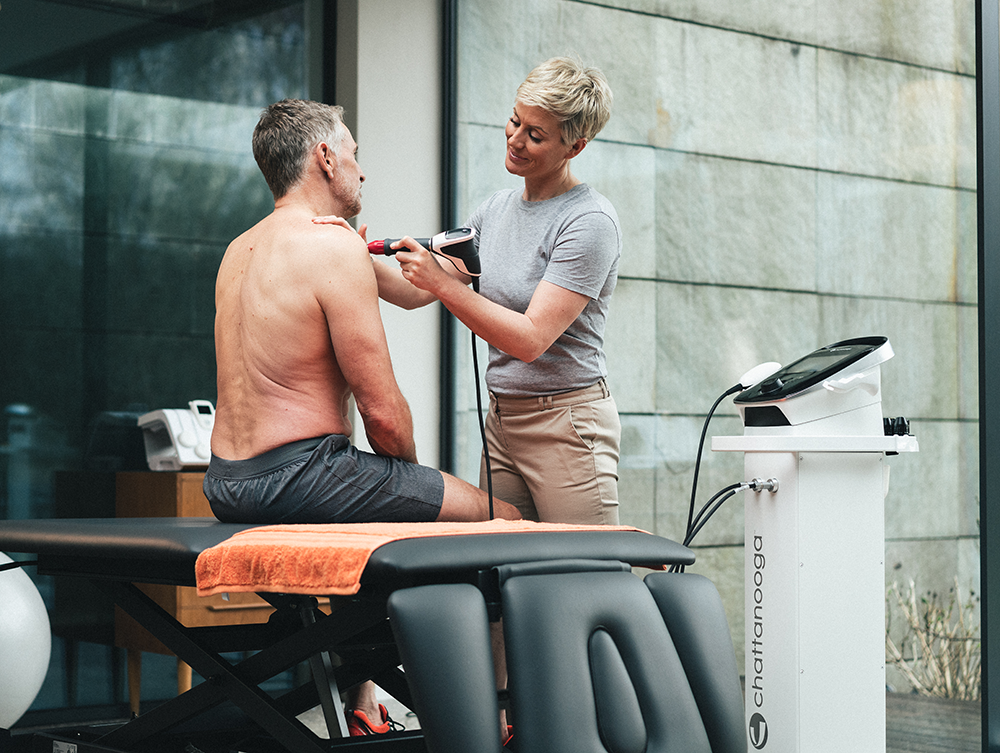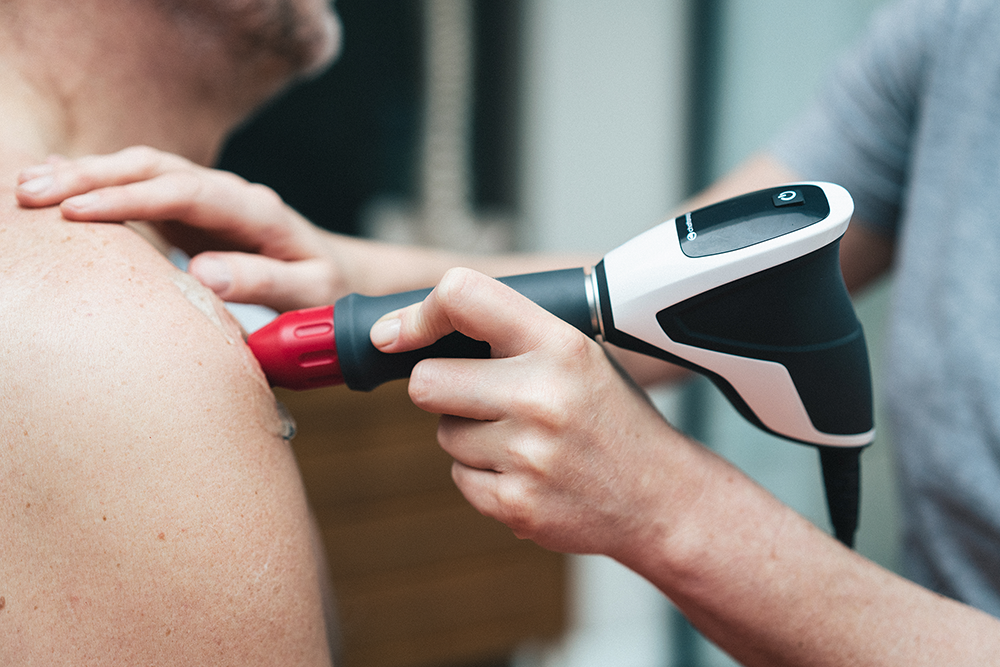Radial pressure wave (RPW) therapy can be used on a range of anatomical structures, each requiring different application techniques and parameters. These treatments can be combined in a session depending on the pathology and the condition.
Treating trigger points with RPW therapy
RPW therapy can help release trigger points and reduce the associated pain.
Patient position
Place the patient in a relaxed position with the affected muscles slightly stretched. Observe the level of pain experienced and reduce the stretch if necessary.
RPW transmitters
The most commonly used transmitters for trigger point treatment have a diameter of 15 mm or 20 mm, with 20mm myofascial transmitters being the most effective.
Intensity
The application pressure for trigger point treatment varies between 1 and 5 bar, depending on the transmitter size and the patient’s rating of pain intensity, which should not exceed grade 5 to 7 on a Visual Analogue Scale.
Frequency
The therapeutic pulse frequency is 4 to 20 Hz. In general, higher frequencies seem to be more tolerable than low frequencies.
Number of pulses per trigger point
As the objective should be to reduce the patient’s pain by at least half, the number of RPW pulses required depends on the envisaged degree of pain relief. Once the desired pain reduction level has been reached, move on to treat the next trigger point in the same way. Typically the range of shocks will lie between 1,000-2,000.
Number of pulses per session
This depends on the patient’s condition, but the total number of pulses to be applied can reach 6,000 to 10,000 depending on the treatment surface, divided between local treatment and large-area muscle treatment. It is recommended that no more than 6,000 shocks should be applied over a specific point.
Area to be targeted
Treat active trigger points as well as satellite trigger points in the area of referred pain. If trigger points cannot be identified, target painful muscle spots. Bear in mind active myofascial trigger points refer distally and may present as an insertional tendinopathy.
Application technique
Hold the applicator at a right angle to the muscle surface to have the shortest possible distance to the target area. RPW devices with 5 bar of pressure and a good quality 20 mm diameter transmitter have been shown to have a maximal penetration depth of 7.60 mm. Ensure the transmitter stays in close contact with the skin without pressing too hard; firm pressure is only required with inferior handpieces. Treating over bone is not harmful but can cause severe discomfort, so patients should be informed for their consent. Treatment directly over the spine or to the head is contraindicated.
Treating tendons and tendon insertions with RPW therapy
Application techniques
Use small circular movements on the pain points along the tendon both medially and laterally using the stamping technique described below.
Treating muscles with RPW therapy
Two different techniques can be used:
- Smoothing
To reduce muscle tone, move the applicator slowly along the skin surface in the direction of the muscle fibre, working from distal to proximal, without exerting pressure, but keeping the transmitter touching the skin via the transmission gel.
- Stamping
Using the same treatment parameters and application direction as for muscle smoothing, apply 30 to 50 radial pressure waves to an identified trigger point or painful area at medium contact pressure before moving the applicator by the width of the transmitter head to the next application site. So named because this technique leaves a ‘stamping pattern’ (temporary redness) due to increased blood flow that quickly resolves.
Number of pulses
500 to 6,000 pulses, depending on pain intensity and the size of the muscles and muscle groups. For example, quadriceps, hamstring, gluteal, and calf muscles require 6,000 pulses using a smoothing technique.
Treating fascia with RPW therapy
The fascial system is one continuous structure that exists from head to toe without interruption. A healthy fascia is elastic and can glide along other fascial structures, but if this gliding quality is restricted, so-called adhesions occur in the system. Because of the interconnection of the fascia, the effects of fascial adhesions can spread through the entire kinetic chain. RPW therapy can help release connective tissue adhesions and constrictions.
In myofascial release, the restricted tissues are manipulated to promote normal sliding and gliding movements of muscles and fascia. RPW fascia transmitters deliver pressure waves tangentially into the tissue instead of vertically to optimize the required movement of the tissue layers. Applications with these transmitters are not carried out at a 90° angle as with other RPW transmitters, but at 45° instead.
Please see the user manual of your RPW device for a full list of clinical indications, contraindications, warnings, and precautions.











